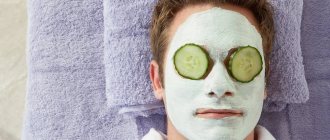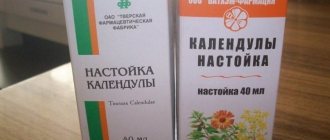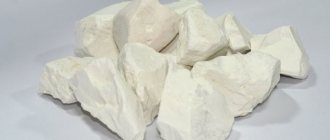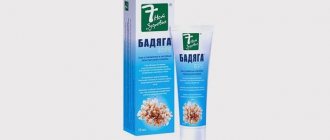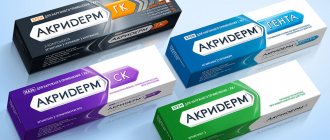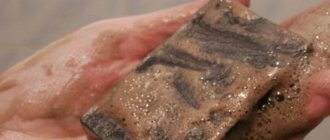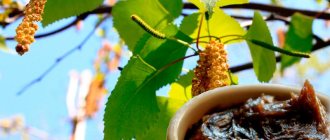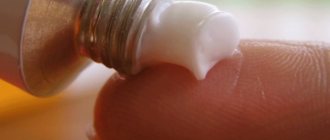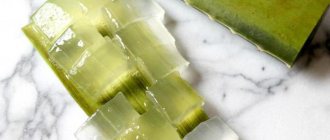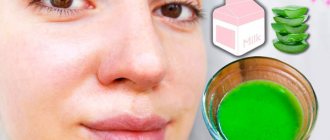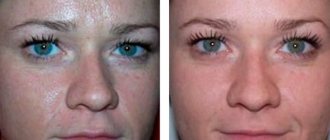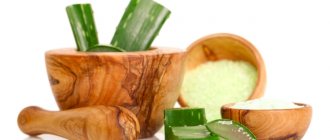Composition and properties of aloe
Aloe leaf contains a large amount of vitamins A, B, C, E, tannins, flavonoids, pectins and organic acids, which have a beneficial effect on the condition of the skin. The active components of the plant have the following effects on the dermis:
- bactericidal;
- regenerating;
- anti-inflammatory;
- brightening.
A product of plant origin kills pathogenic bacteria, relieves inflammation and quickly heals the skin. Since aloe juice for acne also has lightening properties, it is used to eliminate post-acne spots on the face. Another very important property of the leaves of the plant is the normalization of the sebaceous glands.
How to make juice yourself
Before preparing the juice, the leaves of the plant are thoroughly washed or doused with boiling water. The raw materials are crushed in any convenient way, and the resulting pulp is squeezed through a bandage.
It is recommended to use the resulting aloe juice for the face against acne immediately after preparation. It cannot be stored. You need to wipe the juice all over your face, or add it to the mask.
Before using the product, it is recommended to thoroughly cleanse your face of impurities using a gel or foam cleanser. To get the best effect, it is recommended to steam the skin first.
Contraindications
Despite the fact that aloe is a natural remedy, aloin, which is part of it, can cause allergic reactions. It is recommended to conduct a sensitivity test before use. The main contraindications for the use of the plant are:
- premenstrual period;
- pregnancy and breastfeeding;
- individual intolerance;
- increased facial hair;
- rosacea;
- the presence of neoplasms in the layers of the epidermis.
If you experience itching and irritation from using aloe juice or pulp on your face, you should contact a dermatologist or allergist and find out the causes of the allergy.
Rubbing your face with leaves
For wiping, only fresh and peeled leaves of the plant should be used. It is not recommended to store cut leaves in the refrigerator for more than three days, as they lose their beneficial properties.
They are also applied as applications to inflamed areas and left to act for half an hour. This product can be used daily for 2-3 weeks.
How to use aloe correctly
Aloe is used in the form of juice, gel, and you can also buy a tincture at the pharmacy. It is better to make juice at home, as it will be a completely natural product.
Aloe cures acne, it's proven. To see the benefits of using it, you need to use it correctly. It is recommended to take a flower that is more than two years old. Choose an aloe leaf 15 cm or more in length.
Important! It is better to cut leaves in the winter-spring period; 2 weeks before this, avoid watering.
The lower large leaves are trimmed at the base, carefully separating them from the trunk. Then they need to be washed well, dried, wrapped in a dark cloth or foil, and put in the refrigerator for two weeks. If you buy pharmaceutical products, then you should choose those that contain at least 20% of the herbal component.
Preparation of raw materials
The simplest recipe is to squeeze aloe juice: finely chop the leaves, grind them in a blender, squeeze the juice through cheesecloth. Store in a cool place, avoiding direct sunlight.
Important! It is better to squeeze the juice before each use, as over time it loses its beneficial properties.
You can also prepare an aqueous solution. Finely chop the leaves, add 1:3 water, place in a dark place for at least an hour. Next, squeeze out the juice and strain. The prepared solution cannot be stored, i.e. it must be made at once.
Facial skin preparation
Any procedures (masks, lotions, etc.) must be done on cleansed facial skin. Therefore, you first need to remove makeup, wash away any remaining cosmetics with gel, foam or milk. If you are planning a mask, then the skin must be steamed well. This will open the pores, making it easier for beneficial substances to penetrate under the epidermis into the deeper layers of the skin.
Aloe based mask recipes
When asked whether aloe helps with acne, reviews from many who have used this product answer in the affirmative. The plant is especially effective in masks. The selection of ingredients depends on the type of facial skin.
With oatmeal
The use of oatmeal in combination with agave juice, cucumber and egg white helps to effectively get rid of comedones and blackheads. This recipe is ideal for oily and normal skin types.
Oatmeal in the amount of 2 tablespoons is pre-ground to a powder using a coffee grinder. The same amount of pre-prepared agave juice is added to the resulting ingredient. Add a small cucumber, grated on a fine grater, and the white part of one chicken egg to the mixture. After the mixture is thoroughly mixed, it is applied to problem skin. The exposure time should not be less than a twenty-minute period.
Another recipe involves the following combination of ingredients:
Oatmeal, ground into powder in a volume of two tablespoons, is mixed with the same amount of agave juice, followed by a small spoon of liquid honey. This product perfectly fights rashes and nourishes the skin.
With honey
This natural beekeeping product is known for its healing properties and rich fortified composition. In combination with agave, it has a powerful antimicrobial and anti-inflammatory effect.
To prepare the medicinal mixture, you will need four crushed leaves of the herbal ingredient, which are poured with cold water in the amount of 1.5 cups. Place on fire and bring to a boil. After the broth has cooled, add a couple of tablespoons of honey. The product is used to wipe the problem areas once a day every day for two weeks.
With lemon and protein
Aloe against acne on the face is often used in combination with lemon juice and chicken protein. This product is well suited for problem skin prone to oily sheen. The mask helps relieve inflammation and normalize the functioning of the sebaceous glands. Another useful property of this combination of ingredients is the whitening effect. Therefore, the mixture is very often used for acne spots on the face.
Agave leaves are first crushed into pulp. For the mask you will need two tablespoons of the product. Add 2-3 drops of citrus juice and one protein to the pulp. The exposure time is half an hour.
With essential oils
An aloe face mask against acne with the addition of essential oils has not only an anti-inflammatory, whitening and cleansing effect. The mixture is often used for mature and aging skin as a rejuvenating agent.
For two tablespoons of crushed agave leaves, 2-3 drops of lemon, rose or any other essential oil are enough. The average treatment time is 20 minutes.
With clay
Aloe juice against acne in combination with clay effectively relieves inflammation and has a drying effect. For oily skin types, it is recommended to use white or blue clay; for sensitive, combination and dry skin, pink clay is suitable.
Instead of water, clay powder is diluted with pre-prepared juice. The mixture applied to the covers is left until completely dry (no more than 10-15 minutes).
A mask based on the following ingredients also works well against rashes:
Finely crushed agave leaves in the amount of a couple of tablespoons are mixed with the protein part of the egg, with a large spoon of blue clay powder and parsley juice in the same amount. All ingredients are thoroughly mixed until a homogeneous consistency is obtained. If necessary, you can add a small amount of water. The mask is applied to the face in a thin, even layer and left until completely dry. To obtain good results, the mixed ingredients are applied to the previously steamed and cleansed dermis. Use regularly at intervals of two to three days.
This product perfectly fights not only acne, but also helps get rid of age spots, as well as lighten post-acne marks.
What is the product used for in cosmetology?
Aloe juice is a popular component of cosmetics, both industrially produced and homemade. It is believed that the biologically active substances contained in the plant can penetrate skin cells and have a certain effect on them.
The pulp of an aloe leaf from which the juice is squeezed.
In cosmetology, aloe juice and preparations based on it are used for:
- Cleansing the skin and reducing pores;
- Moisturizing and nourishing the skin;
- Reducing inflammation on the skin;
- Treatment of acne and purulent rashes;
- Elimination of post-acne;
- Healing of small wounds and scratches;
- Preventing the appearance of wrinkles and reducing their severity.
Aloe juice contains many vitamins and other beneficial components. It is believed that due to this, the product nourishes the skin and provides it with all the necessary substances. There is also an opinion that the drug moisturizes the skin well and protects it from the appearance of premature wrinkles.
Due to its anti-inflammatory and antibacterial properties, the plant is credited with being effective in eliminating acne. They also say that aloe helps get rid of blackheads on the face and acne.
It is also useful to read: Aloe extract and instructions for its use
The product is also used to eliminate purulent and subcutaneous acne. The leaves of the flower are cut in half and applied to the rash areas. They are believed to draw out pus and allow the skin to heal quickly.
It is believed that in this way the aloe leaf will draw out the pus from the pimple.
People know a lot of recipes for products based on aloe and other medicinal ingredients that are used to eliminate cosmetic defects. For example, a plant extract is mixed with lemon juice and used to lighten the skin, and a preparation with the addition of honey is used to enrich the skin with beneficial substances.
How to make a tincture from a plant
Tincture is another way to get rid of acne using aloe. Treating rashes with it helps dry out the inflamed areas and stop further growth of bacteria.
To prepare the tincture, take vodka or diluted forty-proof alcohol and crushed agave leaves. The ratio of components should be one to one. The product is placed in a dark and cool place for a ten-day period, after which the tincture is ready for use. It is used to directly burn the inflamed areas; it is not recommended to smear the entire face, since alcohol has an aggressive effect on the dermis, severely drying it out.
Making ice from agave
Not only a decoction or mask of aloe for acne is effective, but also cosmetic ice prepared with the help of this plant.
Agave juice is mixed with a previously prepared decoction of calendula, chamomile, oak or linden. The ratio of medicinal components is taken one to one. The resulting liquid is poured into ice molds and placed in the freezer. Use the resulting ice to wipe your face in the morning and evening.
Reviews of aloe for acne
Vika: As soon as any inflammation pops up, I immediately apply an aloe vera leaf at night. In the morning there is no trace of redness left. I'm quite happy with this. Although, of course, the plant is unlikely to help with numerous acne, it is important to take this into account for those who have a lot of pimples popping up every day.
Marina: I make masks with agave every week. The product works well to cleanse the skin and relieve redness. I have been using aloe for over a year now. I want to say that I like the effect, I’m already used to such treatments. I don’t use any other methods to fight acne, which is probably why I can’t completely cure the problem.
Sasha: A good remedy for minor rashes. I immediately cauterize any acne that appears with agave tincture. The inflammation goes away within a few days.
Use Cases
Agave is a hypoallergenic plant and interacts well with various substances. These properties allow it to be used in different ways.
Many cosmetic products are prepared based on sabur:
- Compresses draw out dirt and bacteria from the pores. Reduce inflammation, relieve swelling. Applications are applied for at least half an hour, and for severe rashes - overnight. The procedures are carried out daily until the desired result is achieved.
- Tonics and lotions are used to prevent acne.
- Masks nourish, moisturize the epidermis, stimulate regeneration processes.
- Ointments and creams. The use of homemade emulsions helps restore the water-electrolyte balance of the epidermis and reduce irritation.
Be sure to read:
The best film masks for blackheads at home: how to make, application rules
The remedies are selected based on the severity of the rash and the desired effect.
